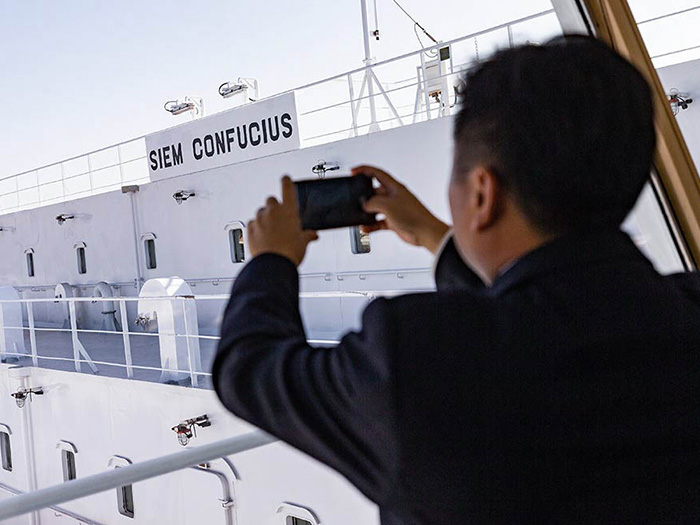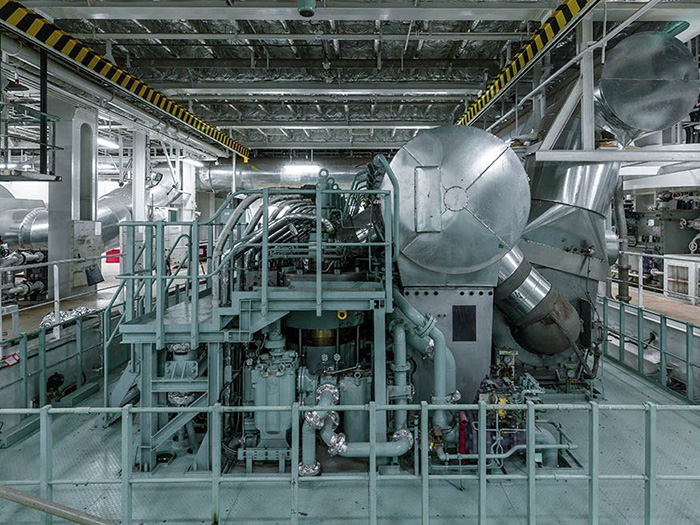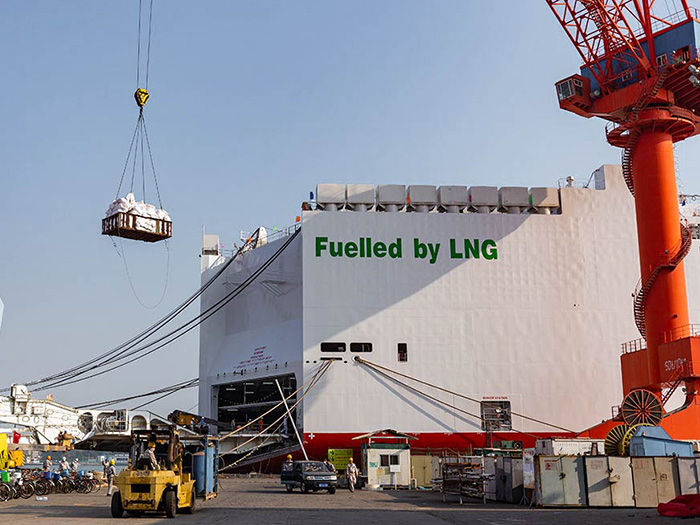Cargo ships to use liquefied natural gas to lower emissions
Volkswagen Group has launched two new ships that will transport its cars across the Atlantic using liquified natural gas (LNG), which has a much lower environmental impact than conventional fuel.

An increasingly sustainable approach involves taking all operations into account, including logistics. Cargo ships - the main form of transport for cars - are not exactly considered environmentally friendly, especially when they are using heavy fuel oil. For this reason, Volkswagen Group, together with the shipping company Siem Car Carriers AS, launched two ships in Xiamen, China, that will sail the world’s oceans using liquified natural gas - known as LNG - which burns much cleaner than conventional liquid fuels such as heavy oil during navigation.
The first of the two new car carriers will be deployed to transport Volkswagen Group cars along the so-called America Round Tour from January 2020, from Europe to Mexico via several ports on the east coast of the USA. The second ship will start its first major voyage along the 12,000 nautical mile route in spring 2020.
Record-breaking ships
Both ships are equipped with two liquified gas tanks with a capacity of 1,800 cubic meters each. That’s enough for a complete round trip, and it ensures a ten percent reserve tank, sufficient for several days. The new ships replace two of the nine cargo ships currently employed on this round trip. They are the largest roll-on, roll-off (RoRo) ships with LNG propulsion ever built.
The benefits of LNG

Liquefied natural gas (LNG) is produced by cooling natural gas to between -161 to -164 °C. LNG is only about one six hundredth the volume of gas-form natural gas and brings great advantages, especially in transport and storage. In contrast to gaseous natural gas, liquid natural gas can be transported in transport containers and is not pipeline-bound.
Liquefied gas is significantly more environmentally friendly during combustion. Emissions of carbon dioxide drop by 25 percent, nitrogen oxide by 30 percent, soot particles by 60 percent and sulfur oxide by 100 percent.
Almost 5,000 cars at a time

The two ships are each 200 meters long and 38 meters wide. Each vessel can transport around 4,700 vehicles, over 13 car decks, four of which are height-adjustable. The ships are powered by a 12,600 kW engine developed by MAN Energy Solutions. The car carriers operate at an average speed of 16.5 knots (30.6 km/h) with a maximum speed of 19 knots (35.2 km/h).
There are no special safety precautions when loading and unloading ships with new cars or during crossings. Bunkering of LNG can be carried out at Emden, Germany, and at Jacksonville, USA. Both ports have successfully passed the simulation tests.
Sustainable thinking
Volkswagen Group had already commissioned the new construction in 2015 at a time when there was less focus on environmental issues.
“We wanted to become more environmentally friendly. And we knew how long it would take to build and commission such ships”, recalls Nina Cordes-Klasing, Shipping Planner, Volkswagen Group Logistics. “It was a courageous decision because the possibilities of refuelling with LNG were not exactly numerous. We started the construction of the new LNG ships in 2018”.
Efficient transport
“Compared with other modes of transport, shipping is one of the most efficient means of transport. Volkswagen Group already transports 2.8 million cars a year by sea and we are constantly optimising our shipping operations,” says Thomas Zernechel, Head of Group Logistics. Every year Volkswagen Group organises, coordinates and is responsible for a total of 7,700 ship departures worldwide. In addition, there are 250,000 container loads on ships which are used to transport components and spare parts.
Sustainable shipping will play a decisive role in ensuring that by 2050 all Volkswagen Group products will be produced and distributed in a completely climate-neutral manner, making a contribution to the Paris climate protection agreement.
Source: Volkswagen AG
